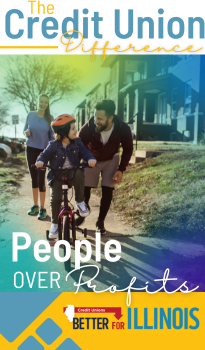Tackling opioid overdoses
Thursday, Apr 28, 2016 - Posted by Rich Miller
* We talked yesterday about how opioid use is soaring in the Metro East.
There is a bill out there which would make abuse a bit more difficult by using some new technology…
A coalition of physicians, law enforcement agencies, addiction survivors and substance abuse counselors urged state lawmakers during a press conference Tuesday to pass legislation that would make it more difficult to misuse prescription opioid medication.
House Bill 2743, which has been sitting idle in the Rules Committee since last May, would require Illinois health insurance companies to cover opioid painkillers made with abuse deterrent properties (ADP).
Prescription opioids containing this relatively new technology are significantly harder to crush and helps prevent users from breaking a pill’s extended release mechanism to achieve a quick and intense high through snorting, smoking or melting and injecting the powder, says Dr. Michael Rock, an attending anesthesiologist and pain mangement director at Community First Medical Center in Chicago.
During a demonstration, Rock showed a pill with abuse deterrent properties can withstand blows from a metal hammer, while a pill that doesn’t have the technology is pulverized with a single strike.
* But there’s also this research published in the Journal of the American Medical Association…
OBJECTIVE: To determine the association between the presence of state medical cannabis laws and opioid analgesic overdose mortality.
DESIGN, SETTING, AND PARTICIPANTS: A time-series analysis was conducted of medical cannabis laws and state-level death certificate data in the United States from 1999 to 2010; all 50 states were included.
EXPOSURES: Presence of a law establishing a medical cannabis program in the state.
MAIN OUTCOMES AND MEASURES: Age-adjusted opioid analgesic overdose death rate per 100,000 population in each state. Regression models were developed including state and year fixed effects, the presence of 3 different policies regarding opioid analgesics, and the state-specific unemployment rate.
RESULTS: Three states (California, Oregon, and Washington) had medical cannabis laws effective prior to 1999. Ten states (Alaska, Colorado, Hawaii, Maine, Michigan, Montana, Nevada, New Mexico, Rhode Island, and Vermont) enacted medical cannabis laws between 1999 and 2010. States with medical cannabis laws had a 24.8% lower mean annual opioid overdose mortality rate (95% CI, -37.5% to -9.5%; P = .003) compared with states without medical cannabis laws. Examination of the association between medical cannabis laws and opioid analgesic overdose mortality in each year after implementation of the law showed that such laws were associated with a lower rate of overdose mortality that generally strengthened over time: year 1 (-19.9%; 95% CI, -30.6% to -7.7%; P = .002), year 2 (-25.2%; 95% CI, -40.6% to -5.9%; P = .01), year 3 (-23.6%; 95% CI, -41.1% to -1.0%; P = .04), year 4 (-20.2%; 95% CI, -33.6% to -4.0%; P = .02), year 5 (-33.7%; 95% CI, -50.9% to -10.4%; P = .008), and year 6 (-33.3%; 95% CI, -44.7% to -19.6%; P < .001). In secondary analyses, the findings remained similar.
CONCLUSIONS AND RELEVANCE: Medical cannabis laws are associated with significantly lower state-level opioid overdose mortality rates. Further investigation is required to determine how medical cannabis laws may interact with policies aimed at preventing opioid analgesic overdose.
Legalize it.
















- Pseudonymous - Thursday, Apr 28, 16 @ 11:46 am:
Making opioids harder to crush is not a perfect solution. A law like this in Indiana led to people firing up the pills in a spoon and shooting the drugs instead, sharing needles and causing an HIV outbreak: http://www.npr.org/sections/health-shots/2016/03/31/469525114/inside-a-small-brick-house-at-the-heart-of-indianas-opioid-crisis
- PublicServant - Thursday, Apr 28, 16 @ 11:47 am:
I’ve heard rumors that legalization is coming, but then again, it might have been the opiods I’m abusing.
- cdog - Thursday, Apr 28, 16 @ 11:56 am:
Why would a person not be pro-legalization, and as seen here, support this “pro-life” position?
Maybe the most powerful opponents have too much invested and are earning mega dividends and capital gains in Big Pharma sector stocks.
Maybe the most powerful opponents are heavily influenced by the lobby which spends big money to protect the status quo of the Big Pharma monster in the US?
Do we dare think this could be?
Legalize Pot. Save A Life.
- wordslinger - Thursday, Apr 28, 16 @ 11:57 am:
–CONCLUSIONS AND RELEVANCE: Medical cannabis laws are associated with significantly lower state-level opioid overdose mortality rates. Further investigation is required to determine how medical cannabis laws may interact with policies aimed at preventing opioid analgesic overdose.–
Make you want to cry.
The law would make sick people junkies or outlaws rather than allow a little relief from weed.
This one could have used some national leadership; shame on President Obama for not providing it.
The people are ready. Big Pharma will put up a fight, though. They’re making fortunes out of turning Americans into junkies.
- Hedley Lamarr - Thursday, Apr 28, 16 @ 12:06 pm:
Paul LePage would say, just let them die.
- train111 - Thursday, Apr 28, 16 @ 12:12 pm:
Marijuana will be completely legal nationwide when:
Big Pharma creates a genetic variant of the plant –”safer marijuana ” they will call it.
Big Pharma then patents the genetic variant they have created so that nobody else can recreate or sell it.
Once the big campaign dollars start rolling dozens of State Legislators and Congresscritters will be walking around like they have left a revival. “We have seen the light and want to repent of our backward thinking!”
Legalization of the patented strain–where big pharma can control all of the profits–will happen very quickly.
All other strains will be illegal, because they aren’t as ’safe’ as the big pharma developed strain.
They did it with oxycontin which is chemically the same as heroin, don’t think they wont do it with marijuana.
train111
- Judgment Day - Thursday, Apr 28, 16 @ 12:16 pm:
“House Bill 2743, which has been sitting idle in the Rules Committee since last May, would require Illinois health insurance companies to cover opioid painkillers made with abuse deterrent properties (ADP).”
————–
That’s a Big Pharma supported bill.
Here’s what they DON’T tell you.
One, the costs per pill will go up.
Second, lots of patients can’t afford to take full per pill doses. To make ends meet, patients will ‘cut’ pain pills to make them last longer.
Big Pharma has made pain killers so expensive and hard to get. When it takes 30+ days to get an appointment (after you get the initial referral) to a pain clinic, why are we surprised in the meantime that patients are cutting the paint medication they have to make them last longer.
Great for Big Pharma, screws over the patients.
Not a fan of this legislation.
- @MisterJayEm - Thursday, Apr 28, 16 @ 12:17 pm:
Friends and family who’ve died from marijuana abuse: None.
Friends and family who’ve died from opioid abuse: Michelle (RIP).
I suspect that the marijuana death-toll is final.
I fear that the opioid one is not.
– MrJM
- Ghost - Thursday, Apr 28, 16 @ 12:17 pm:
this is just failed prohibition era policies.
alcohol a d highly tefned opoids do far more dmg then marijuana we need to get away from these sin laws and just abandon the war on drugs. it works as well as the war in alcohol. we pay huge expense with little benfit from this war, and we fund huge criminal enterprises.
legalize it, tax it, and make possesion of other drugs minor offenses. empty the jails of drug users and free up the cash we spend imprisoning people who lack the socioeconomic resources to go to a dr feel good for legalized addictions. in many ways the social impact of these laws creates a discriminatory impact. End prohibition, save 100s of millions in legal and correctional expense and make money on taxation. lottery the **** out of Marijuana. money for social services and decresed enfrocement expenses. win win
- Honeybear - Thursday, Apr 28, 16 @ 12:23 pm:
Hey there was a segment on NPR about the ADP’s don’t work. The addicts have found a workaround. It was an interesting first hand account of how they do it.
- AC - Thursday, Apr 28, 16 @ 12:25 pm:
Statistics need to drive public policy, and in this case what we need to do is clear.
I’d also be interested in seeing how many alcohol related deaths would be reduced by legalization of recreational marijuana, I suspect there’d be a similar trend.
- Opiates Kill Cannabis Saves lives - Thursday, Apr 28, 16 @ 12:31 pm:
Norco, Oxy, Vicodin are all essentially small doses of heroin made by drug companies and approved by the FDA
Thousands die every year for overdose and millions are addicted
cannabis has never killed anyone ever and reduces opiate overdoses by 25% in every state that allows cannabis for treatment of pain
- Follow the money - Thursday, Apr 28, 16 @ 12:37 pm:
take a look at where Gov Rauner invests his money.
GTCR has invested HUNDREDS of MILLIONS into pharma companies that make pain meds
- Grandson of Man - Thursday, Apr 28, 16 @ 12:43 pm:
Medical marijuana is so much safer than opioids. It’s imperative in my opinion to expand medical marijuana. I was so disappointed when Bruce twice rejected expanding medical marijuana for more illnesses.
- Northerwatersoorts - Thursday, Apr 28, 16 @ 12:51 pm:
I’m with ya brother. Legalize it. I’m even happy to pay any tax associated with it, as on the whole it’s a winner across the board.
- Last Bull Moose - Thursday, Apr 28, 16 @ 12:52 pm:
Marijuana is not harmless. It affects brain development up to a certain age.
Please do not create a situation where someone profits by creating addicts.
I can support State distribution of less harmful drugs, medical approach on dangerous drugs like heroin, and continued bans on meth and similar drugs.
- cdog - Thursday, Apr 28, 16 @ 1:10 pm:
LBM, so you are in favor of criminalizing or more strongly controlling alcohol?
- Mr. Nice - Thursday, Apr 28, 16 @ 1:11 pm:
Based upon that study and the heroin epidemic that we are facing, maybe we should add chronic pain and PTSD as qualifying conditions under the Illinois medical cannabis program!
- cdog - Thursday, Apr 28, 16 @ 1:13 pm:
If the Dems ran candidates that openly talked about their support for legalization, they could probably earn a super-majority in the legislature and take the Executive branch, in 2018 election.
Legalize Pot. Save Lives.
- Homer J. Quinn - Thursday, Apr 28, 16 @ 1:17 pm:
last bull moose, we are ALREADY in a situation where someone profits by creating addicts. those someones have names like “Pfizer” and “GlaxoSmithKline” and “Bruce Rauner.”
- wordslinger - Thursday, Apr 28, 16 @ 1:27 pm:
–I can support State distribution of less harmful drugs, medical approach on dangerous drugs like heroin, and continued bans on meth and similar drugs.–
Sigh.
There is a “medical approach” to heroin. It’s called Oxy and unscrupulous docs have been writing scripts for it like gummy bears.
There is also a “medical approach” to meth. It’s called Adderall, and the docs are dishing that out like candy, too.
Oxy and Adderall are the “gateway drugs” to heroin and meth. Once you can’t get the good stuff, you hit the streets for the knock-offs.
I encourage everyone to hit the google for the great work that the WSJ and NYT have done in recent years on how Big Pharma loaded up the docs with swag to get them to write these scripts.
This opiod crisis is not an accident; it is the inevitable result of a highly lucrative but immoral business plan that makes Pablo Escobar look like a nickel-bag street hustler.
- RJM - Thursday, Apr 28, 16 @ 1:34 pm:
A Rand study that came out last summer supported the JAMA study and found an even tighter correlation between states with open and accessible cannabis dispensaries and decrease in opioid mortality. So cannabis saves lives, allows people to live more productive lives, generates tax revenue and will reduce city, county and state expenditures on healthcare and criminal justice. But we’re still looking for a solution to the opioid epidemic?
- @MisterJayEm - Thursday, Apr 28, 16 @ 2:01 pm:
“Marijuana is not harmless. It affects brain development up to a certain age.”
Absolutely true. And that’s also true for Marlboros and Red Bull.
We’re not talking about introducing Original Sin into the Garden of Eden here. We’re talking about making the best choices we can with the facts as they exist.
And legalizing the demon weed looks like the least bad choice to me.
– MrJM
- Grandson of Man - Thursday, Apr 28, 16 @ 2:49 pm:
“Please do not create a situation where someone profits by creating addicts.”
It’s about changing models. For marijuana, millions of people are consuming it yet it’s a black market instead of a legal market, in which legitimate businesses and governments profit. Adults profit also because they don’t get arrested and convicted for lawful use.
The war on drugs has done nothing to stop use and has caused so many problems. I believe things will get better with drug laws when younger people get positions of power. It’s already getting better in many states.
- Team Warwick - Thursday, Apr 28, 16 @ 2:52 pm:
Totally lame conclusion. OD rates are up among users because of foreign made opioid formulas that are both more potent and very toxic. These new designer drugs didnt previously exist so they couldnt possibly have any correlation whatsoever to state statutes on medical cannabis. Geeeeeesh. Lame. Just saying…..suspicious too.
- Scott Cross for President - Thursday, Apr 28, 16 @ 3:11 pm:
As part of an initiative meant to reward quality care, the Centers for Medicare and Medicaid Services is allocating some $1.5 billion in Medicare payments to hospitals based on criteria that include patient-satisfaction surveys. Among the questions:
“During this hospital stay, how often did the hospital staff do everything they could to help you with your pain?”
“How often was your pain well controlled?”
To many doctors struggling to contain the nation’s opioid crisis, tying a patient’s feelings about pain management to a hospital’s bottom line is well-intentioned but dangerous.
Time has a great story on this: http://goo.gl/PfDqyA
- crazybleedingheart - Thursday, Apr 28, 16 @ 3:52 pm:
==take a look at where Gov Rauner invests his money.
GTCR has invested HUNDREDS of MILLIONS into pharma companies that make pain meds
==
And, given the choice between blaming Mary Jane or the mirror, goes to sleep at night by cursing MJ every time.
- Anonymous - Thursday, Apr 28, 16 @ 3:54 pm:
Effects of cannabis use on opioid injection frequency
Aims: Opioid abuse is a critical public health problem in the US, with 2.1 million people reporting past year pain reliever depen-dence in 2012. Opioid addiction may lead to criminality, injection drug use, HIV and mortality. The medical use of cannabis has been studied and therapeutic benefits observed. There is evidence that opioid users turn to cannabis to progress out of opioid use. Obser-vational research has shown that cannabis users report using it as a substitute for alcohol, illicit and prescription drugs.
Methods: We conducted a longitudinal study of cannabis use and injection frequency among 357 opioid injectors recruited through street outreach in Denver from 2007 to 2012. To eval-uate changes over time, we incorporated longitudinal negative binomial models of injection frequency, where the primary out-come of interest was the difference in injection frequency among cannabis groups over time while controlling for predictors of loss to follow-up. The interaction tested whether reductions over time were different between the three cannabis use groups.
Results: Reductions in injection frequency were seen across groups but notably at the twelve month period between the high cannabis use and low cannabis use groups. The significant interaction suggested a 47% decrease (p=0.02) in reported injec-tion frequency in high cannabis-using individuals over individuals reporting low cannabis consumption at 12 months. We found sig-nificant decreases in injection frequency among individuals who used cannabis for 20 or more days per month over those who used less than 10 days per month.
Conclusions: The study findings suggest that further research should examine the relationship between cannabis and opioid use.
Financial support: This study was supported by the National Institute on Drug Abuse, DA09832-15.
The effects of dronabinol during detoxification and the initiation of treatment with extended release naltrexone
Drug and Alcohol Dependence May 2015
Background:
Evidence suggests that the cannabinoid system is involved in the maintenance of opioid dependence. We examined whether dronabinol, a cannabinoid receptor type 1 partial agonist, reduces opioid withdrawal and increases retention in treatment with extended release naltrexone (XR- naltrexone).
Methods:
Opioid dependent participants were randomized to receive dronabinol 30 mg/d (n = 40) o placebo (n = 20), under double- blind conditions, while they underwent inpatient detoxification and naltrexone induction. Before discharge all participants received an injection of XR- naltrexone, with an additional dose given four weeks later. Dronabinol or placebo was given while inpatient and for 5 weeks afterwards. The primary outcomes were the severity of opioid withdrawal measured with the Subjective Opioid Withdrawal Scale, and retention in treatment at the end of the inpatient phase and at the end of the 8-week trial.
Results:
The severity of opioid withdrawal during inpatient phase was lower in the dronabinol group relative to placebo group (p = 0.006). Rates of successful induction onto XR- naltrexone (dronabinol 66%, placebo 55%) and completion of treatment (dronabinol 35%, placebo 35%) were not significantly different. Post hoc analysis showed that the 32% of participants who smoked marijuana regularly during the out- patient phase had significantly lower ratings of insomnia and anxiety and were more likely to complete the 8-week trial.
Conclusion:
Dronabinol reduced the severity of opiate withdrawal during acute detoxification but had no effect on rates of XR- naltrexone treatment induction and retention. Participants who elected to smoke marijuana during the trial were more likely to complete treatment regardless of treatment group assignment.
- Anonymous - Thursday, Apr 28, 16 @ 3:56 pm:
The effects of dronabinol during detoxification and the initiation of treatment with extended release naltrexone
Drug and Alcohol Dependence May 2015
Background:
Evidence suggests that the cannabinoid system is involved in the maintenance of opioid dependence. We examined whether dronabinol, a cannabinoid receptor type 1 partial agonist, reduces opioid withdrawal and increases retention in treatment with extended release naltrexone (XR- naltrexone).
Methods:
Opioid dependent participants were randomized to receive dronabinol 30 mg/d (n = 40) o placebo (n = 20), under double- blind conditions, while they underwent inpatient detoxification and naltrexone induction. Before discharge all participants received an injection of XR- naltrexone, with an additional dose given four weeks later. Dronabinol or placebo was given while inpatient and for 5 weeks afterwards. The primary outcomes were the severity of opioid withdrawal measured with the Subjective Opioid Withdrawal Scale, and retention in treatment at the end of the inpatient phase and at the end of the 8-week trial.
Results:
The severity of opioid withdrawal during inpatient phase was lower in the dronabinol group relative to placebo group (p = 0.006). Rates of successful induction onto XR- naltrexone (dronabinol 66%, placebo 55%) and completion of treatment (dronabinol 35%, placebo 35%) were not significantly different. Post hoc analysis showed that the 32% of participants who smoked marijuana regularly during the out- patient phase had significantly lower ratings of insomnia and anxiety and were more likely to complete the 8-week trial.
Conclusion:
Dronabinol reduced the severity of opiate withdrawal during acute detoxification but had no effect on rates of XR- naltrexone treatment induction and retention. Participants who elected to smoke marijuana during the trial were more likely to complete treatment regardless of treatment group assignment.
Is cannabis use associated with less opioid use among people who inject drugs?
Background
Clinical, experimental, and ethnographic research suggests that cannabis may be used to help manage pain. Ethnographic research has revealed that some people are using cannabis to temper their illicit opioid use. We seek to learn if there is an association between cannabis use and the frequency of nonmedical opioid use among people who inject drugs (PWID).
Methods
PWID were recruited using targeted sampling methods in Los Angeles and San Francisco, California, 2011–2013. We limited analysis to people who used opioids in past 30 days (N = 653). Outcome variable: number of times used any opioids non-medically in past 30 days. Explanatory variable: any cannabis use past 30 days. Statistics: multivariable linear regression with a log-transformed outcome variable.
Results
About half reported cannabis use in the past 30 days. The mean and median number of times using opioids in past 30 days were significantly lower for people who used cannabis than those who did not use cannabis (mean: 58.3 vs. 76.4 times; median: 30 vs 60 times, respectively; p
- Anonymous - Thursday, Apr 28, 16 @ 3:58 pm:
Is cannabis use associated with less opioid use among people who inject drugs?
Background
Clinical, experimental, and ethnographic research suggests that cannabis may be used to help manage pain. Ethnographic research has revealed that some people are using cannabis to temper their illicit opioid use. We seek to learn if there is an association between cannabis use and the frequency of nonmedical opioid use among people who inject drugs (PWID).
Methods
PWID were recruited using targeted sampling methods in Los Angeles and San Francisco, California, 2011–2013. We limited analysis to people who used opioids in past 30 days (N = 653). Outcome variable: number of times used any opioids non-medically in past 30 days. Explanatory variable: any cannabis use past 30 days. Statistics: multivariable linear regression with a log-transformed outcome variable.
Results
About half reported cannabis use in the past 30 days. The mean and median number of times using opioids in past 30 days were significantly lower for people who used cannabis than those who did not use cannabis (mean: 58.3 vs. 76.4 times; median: 30 vs 60 times, respectively; p
- Anonymous - Thursday, Apr 28, 16 @ 3:59 pm:
Impact of Cannabis Use During Stabilization on Methadone Maintenance Treatment
Background and Objectives—Illicit drug use, particularly of cannabis, is common among opiate-dependent individuals, and has the potential to impact treatment in a negative manner.
Methods—To examine this, patterns of cannabis use prior to and during methadone maintenance treatment (MMT) were examined to assess possible cannabis-related effects on MMT, particularly during methadone stabilization. Retrospective chart analysis was used to examine outpatient records of patients undergoing MMT (n=91), focusing specifically on past and present cannabis use and its association with opiate abstinence, methadone dose stabilization, and treatment compliance.
Results—Objective rates of cannabis use were high during methadone induction, dropping significantly following dose stabilization. History of cannabis use correlated with cannabis use during MMT, but did not negatively impact the methadone induction process. Pilot data also suggested that objective ratings of opiate withdrawal decrease in MMT patients using cannabis during stabilization.
Conclusions and Scientific Significance—The present findings may point to novel interventions to be employed during treatment for opiate dependence that specifically target cannabinoid-opioid system interactions.
- Anonymous - Thursday, Apr 28, 16 @ 4:10 pm:
Medical cannabis associated with decreased opiate medication use in retrospective cross-sectional survey of chronic pain patients
March 7 2016 Journal of Pain
Manuscript Highlights:
• Cannabis use associated with 64% lower opioid use in chronic pain patients.
• Cannabis use associated with increased quality of life in chronic pain patients.
• Cannabis use associated with fewer medication side effects and medications used.
Abstract
Opioids are commonly used to treat patients with chronic pain (CP), though there is little evidence that they are effective for long term CP treatment. Previous studies reported strong associations between passage of medical cannabis laws and decrease in opioid overdose statewide. Our aim was to examine whether using medical cannabis for CP changed individual patterns of opioid use. Using an online questionnaire, we conducted a cross-sectional retrospective survey of 244 medical cannabis patients with CP who patronized a medical cannabis dispensary in Michigan between November 2013 and February 2015. Data collected included demographic information, changes in opioid use, quality of life, medication classes used, and medication side effects before and after initiation of cannabis usage. Among study participants, medical cannabis use was associated with a 64% decrease in opioid use (n=118), decreased number and side effects of medications, and an improved quality of life (45%). This study suggests that many CP patients are essentially substituting medical cannabis for opioids and other medications for CP treatment, and finding the benefit and side effect profile of cannabis to be greater than these other classes of medications. More research is needed to validate this finding.
Perspective: This article suggests that using medical cannabis for CP treatment may benefit for some CP patients. The reported improvement in quality of life, better side effect profile, and decreased opioid use should be confirmed by rigorous, longitudinal studies that also assess how CP patients use medical cannabis for pain management.
Effects of cannabis use on opioid injection frequency
Aims: Opioid abuse is a critical public health problem in the US, with 2.1 million people reporting past year pain reliever depen-dence in 2012. Opioid addiction may lead to criminality, injection drug use, HIV and mortality. The medical use of cannabis has been studied and therapeutic benefits observed. There is evidence that opioid users turn to cannabis to progress out of opioid use. Obser-vational research has shown that cannabis users report using it as a substitute for alcohol, illicit and prescription drugs.
Methods: We conducted a longitudinal study of cannabis use and injection frequency among 357 opioid injectors recruited through street outreach in Denver from 2007 to 2012. To eval-uate changes over time, we incorporated longitudinal negative binomial models of injection frequency, where the primary out-come of interest was the difference in injection frequency among cannabis groups over time while controlling for predictors of loss to follow-up. The interaction tested whether reductions over time were different between the three cannabis use groups.
Results: Reductions in injection frequency were seen across groups but notably at the twelve month period between the high cannabis use and low cannabis use groups. The significant interaction suggested a 47% decrease (p=0.02) in reported injec-tion frequency in high cannabis-using individuals over individuals reporting low cannabis consumption at 12 months. We found sig-nificant decreases in injection frequency among individuals who used cannabis for 20 or more days per month over those who used less than 10 days per month.
Conclusions: The study findings suggest that further research should examine the relationship between cannabis and opioid use.
Financial support: This study was supported by the National Institute on Drug Abuse, DA09832-15.
The effects of dronabinol during detoxification and the initiation of treatment with extended release naltrexone
Drug and Alcohol Dependence May 2015
Background:
Evidence suggests that the cannabinoid system is involved in the maintenance of opioid dependence. We examined whether dronabinol, a cannabinoid receptor type 1 partial agonist, reduces opioid withdrawal and increases retention in treatment with extended release naltrexone (XR- naltrexone).
Methods:
Opioid dependent participants were randomized to receive dronabinol 30 mg/d (n = 40) o placebo (n = 20), under double- blind conditions, while they underwent inpatient detoxification and naltrexone induction. Before discharge all participants received an injection of XR- naltrexone, with an additional dose given four weeks later. Dronabinol or placebo was given while inpatient and for 5 weeks afterwards. The primary outcomes were the severity of opioid withdrawal measured with the Subjective Opioid Withdrawal Scale, and retention in treatment at the end of the inpatient phase and at the end of the 8-week trial.
Results:
The severity of opioid withdrawal during inpatient phase was lower in the dronabinol group relative to placebo group (p = 0.006). Rates of successful induction onto XR- naltrexone (dronabinol 66%, placebo 55%) and completion of treatment (dronabinol 35%, placebo 35%) were not significantly different. Post hoc analysis showed that the 32% of participants who smoked marijuana regularly during the out- patient phase had significantly lower ratings of insomnia and anxiety and were more likely to complete the 8-week trial.
Conclusion:
Dronabinol reduced the severity of opiate withdrawal during acute detoxification but had no effect on rates of XR- naltrexone treatment induction and retention. Participants who elected to smoke marijuana during the trial were more likely to complete treatment regardless of treatment group assignment.
Is cannabis use associated with less opioid use among people who inject drugs?
Background
Clinical, experimental, and ethnographic research suggests that cannabis may be used to help manage pain. Ethnographic research has revealed that some people are using cannabis to temper their illicit opioid use. We seek to learn if there is an association between cannabis use and the frequency of nonmedical opioid use among people who inject drugs (PWID).
Methods
PWID were recruited using targeted sampling methods in Los Angeles and San Francisco, California, 2011–2013. We limited analysis to people who used opioids in past 30 days (N = 653). Outcome variable: number of times used any opioids non-medically in past 30 days. Explanatory variable: any cannabis use past 30 days. Statistics: multivariable linear regression with a log-transformed outcome variable.
Results
About half reported cannabis use in the past 30 days. The mean and median number of times using opioids in past 30 days were significantly lower for people who used cannabis than those who did not use cannabis (mean: 58.3 vs. 76.4 times; median: 30 vs 60 times, respectively; p